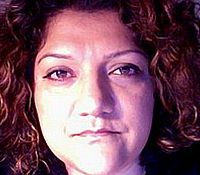1. What are you doing towards Digital Inclusion in Charlotte?
The Media Democracy Fund has hosted a number of learning exchanges in Charlotte with our grantees from other cities. We also planned and hosted a “Building Connected Communities” workshop last Fall that had over 100 people in attendance–who ranged in age from 10-45. We’ve also hosted several Policy Roundtable breakfasts, and for the last four months, we’ve been hosting a monthly “Broadband, Technology and Community Development” meeting for leaders who want to engage in advocacy to ensure the communication rights of all are protected. Finally, we’ve recently begun a project in partnership with the University of Florida which will be based in a set of West Side neighborhoods. The project will explore the role that technology can play in housing stability and will work with senior citizens and their families to explore technologies that can assist them with aging in place.
2. Why are you working towards Digital Inclusion in Charlotte?
Digital inclusion is a prerequisite to both social and economic inclusion, in this regard I would refer to my work as digital equity or digital justice, meaning the work MDF does whether through grantmaking or convenings, seeks to uncover and disrupt the power dynamics that disproportionately impact vulnerable communities. As such, I believe that we need to understand the social context and social infrastructure that either facilitates meaningful access to the Internet, or prevents it. From communication rights, to access and representation, I believe that the ability to tell our own story in our own words (especially as communities of color) is critical, because stories which are told about our communities shape the policies that govern our communities.
What does a digitally connected community look like to you?
For many years I worked at the Center for Media Justice and we always said “The power to communicate belongs to everyone” and I believe that. As a result, a connected community, –irrespective of digital technologies–is one that is connected politically, culturally AND technologically, and understands the traditional pathways that knowledge and information is shared. Personally, I do not believe there is a technological solution to the social and economic inequities of our time, however I do think technologies can help to facilitate new ways of thinking, connecting and building that can be leveraged to challenge the disparities our communities face. While digital access will not connect a community–it can enhance the power and speed and reach of a community as they seek new allies and envision their shared future.
